Introducing the latest myCWT product and service enhancements
Building on our digital, omnichannel myCWT platform, our new products and services will simplify travel management for you and your employees – anytime, anywhere, anyhow.
Note: Featured services may not be available in your country at this time. Please reach out to your CWT representative for more details.
Hear from Chief Product Officer, Erica Antony as she shares the key product highlights of 2024, along with the key areas driving innovation.
-

2040: Baseline, Boom or Bust
As we enter an era of rapid transformation and unprecedented challenges, it is essential for travel managers, meeting & event planners, and corporate decision-makers to look ahead and frame our current strategic thinking with a clear vision of the future. Business travel and meetings and events (M&E) are poised for significant change over the next decade and a half, driven by a complex interplay of sustainability goals, technological advancements, evolving work models, and geopolitical dynamics.
In this paper to mark the 10th anniversary of our Global Business Travel Forecast, we explore, for the first time, a long-term vision of the future and potential trajectories through three distinct scenarios, each offering insights into how these forces should affect policy-making, budgeting and priorities. By examining these scenarios, we can better understand the diverse possibilities that lie ahead and the strategic imperatives required to thrive in each potential future.
Based on trajectory data analysis and interviews with industry leaders, behaviorists and climate tech founders, this forward-looking approach enables us to anticipate changes, strengthen our strategies, and make informed decisions that align long-term objectives. It is through this lens of foresight and adaptability that we can build resilience, seize opportunities, and navigate the complexities of the future.
We invite you to reflect on the insights presented, and consider how your organization can prepare for the opportunities and challenges that lie ahead. Together we can ensure that travel and meetings remain catalysts for growth, scalability and sustainable practices.
- Scenario development is both an art and a science
- Megatrends Shaping the Future of Business Travel, Meetings and Events
- Sustainability goals the new crux of corporate policy
- Technology Revolutionizes Travel Management
- Modern work models spark new travel patterns
- Changing demographics open doors to new opportunities
- Three Scenarios: Base case, boom and bust
- Future-proofing strategies

-

CWT GBTA Global business travel forecast 2025
When it comes to pricing, global business travel has finally reached an enduring, higher baseline. Prices will continue to rise in 2025, but only moderately, so expect a period of normalized growth.
However, this pricing environment, one of marginal gains and price regularity, is fragile. Global leisure travel has now realized a lot of its pent-up demand, while corporate travel has been resurgent, with 2024 edging at preCovid levels.
There are many factors at play, whether its volatile oil prices, labor costs and constraints, inflationary pressures, and geopolitical factors. As this elevated baseline edges upwards, albeit marginally, travel budgets will come under increased scrutiny, especially as travel patterns and attitudes change.
It’s why business travel can’t be viewed in a silo, and the true value to an organization must be fully realized. This forecast can help with those calculations.

-

Capitalize on emerging technologies in corporate travel
Technological advancements are accelerating at an unprecedented pace. How will emerging innovations like Generative AI, blockchain, and self-sovereign identity (SSI) transform corporate travel?
BTN and CWT probed global CEOs, travel managers, industry consultants and tech experts on the promises, questions, and expectations these innovations raise and how they are set to reshape traveler experience, cost control and service delivery in corporate travel and events.
Download and discover
- The technologies that will have the greatest impact on corporate travel in the next 2-5 years
- How these emerging technologies are poised to control costs, enhance service and security, and boost efficiency
- The critical challenges, opportunities, risks and roadblocks each innovation raises
- What travel managers, buyers and experts anticipate from these innovations

-
![2020 Thailand Incentives & Meetings Exchange (TIME) in Bangkok was held as a hybrid event, with some speakers and attendees participating virtually [Photo credit: Thailand Convention & Exhibition Bureau (TCEB)]](https://www.stage-mycwt.com/wp-content/uploads/2022/04/the-best-of-both-worlds-five-things-to-consider-when-organizing-hybrid-events.jpg?w=1024)
The best of both worlds – 5 things to consider when organizing hybrid events
Over the past year and a half, the world was inundated with Zoom meetings and virtual events to keep businesses operational – in-between getting our fresh loaves of sourdough out of the oven, of course. Being able to meet in person has been tricky with looming threats of continued virus outbreaks and little to no travel opportunities.
Even though, we are seeing an uptake in face-to-face meetings and there is a huge interest to get back together after such a long time. It is also likely that travel restrictions and various safety requirements will remain in place for some time to come. So, not all participants may be able or feel comfortable to attend in-person. Therefore, my guess is that the interest for organizing hybrid meetings & events will continue to grow.
Hybrid events, which combine both virtual and in-person elements, allow organizers to reach a wider audience and get the best of both worlds. You can achieve higher levels of engagement and create valuable networking opportunities that are only possible through face-to-face interactions. At the same time, having some attendees join virtually can mean lower costs, a smaller carbon footprint and ensure compliance with health and safety requirements.
If you’re looking to plan a hybrid event, here are five important things to consider:
- Budgets: A typical hybrid meeting will have some participants gather at one or more hub locations, ideally situated close to where majority of them are based. Attendees who can’t be physically present at these locations, join the event virtually via an online platform.
By limiting the number of people who attend in person, this format helps reduce travel costs to a certain extent. However, planners still need to factor in the costs of both the live elements like the venue, catering, and audio-visual requirement, as well as the digital elements such as the online platform, audio, and cameras required to stream the event to the remote participants. - Production format and options: Consider the technology needed to execute the hybrid event. Will you have 100 people in the live audience and 500 people view the stream? Is the meeting simply a presenter in a studio with content streaming out to the whole audience online.
Remember, you will need to meet the requirements of both a live audience and the online audience. For larger events, like the one described above, each presenter will need their own microphone, a show-caller will likely be involved and there is a high-chance that multiple cameras will need to be brought in to cover the speakers on stage.
The good news is that many venues in Australia’s major cities are well prepared for hybrid meetings, some with purpose-built studios complete with cameras and green screens. - Content is king: Everything we have learned about meeting virtually is relevant to hybrid events, keeping in mind that whilst your live audience can handle some ‘padding’ like the transition time between sessions, meal breaks and such, your virtual audience needs to remain engaged from start-to-finish.
The content, agenda, speakers, and interactions need to be engaging and relevant, more now than ever before. This leads me to the next point. - Time management: Let’s face it, burnout from virtual interactions is real, and whilst some audiences can handle a full-day of meeting online, from experience we have learned that most audiences can’t do more than a few hours. Keep your content relevant, short, and snappy, with high-quality engagement throughout which is sure to leave a lasting impression on your audience.
Your live audience will thank you for it as well, being a half-day meeting they can still tend to their regular workload back at the office and pick the kids up from school. - Engaging your online audience: Your live audience is going to benefit from chatting to colleagues in the pre-event area and they will be able to attend the post-event dinner function – but don’t forget about your online attendees when dishing out the perks.
If COVID-19 has taught us anything, we’re extremely creative and adaptable when put under pressure. During lockdown, many businesses pivoted their service, creating unique gift boxes, meal kits and the like, all of which your online audience can benefit from.
Are your in-person attendees being treated to an after-event cocktail function? Why not send a pre-packed, company-branded cocktail kit to the doors of your virtual attendees? Or perhaps send meal delivery vouchers for them to enjoy with their family that evening.
The return to live meetings and events continues to be a challenge, especially keeping participants engaged. We know people are experiencing a degree of fatigue with meeting online, yet there is a need to keep conversations flowing, ideas progressing and people interacting. By creating an opportunity for at least some delegates to meet face-to-face in a way that complies with safety requirements, while also supporting other objectives such as cost management and sustainability targets, hybrid events can be a great middle-ground.
Visit CWT Meetings & Events
A version of this article was published on Spice News and has been republished with permission.
Image credit: Thailand Convention & Exhibition Bureau (TCEB)
- Budgets: A typical hybrid meeting will have some participants gather at one or more hub locations, ideally situated close to where majority of them are based. Attendees who can’t be physically present at these locations, join the event virtually via an online platform.
-
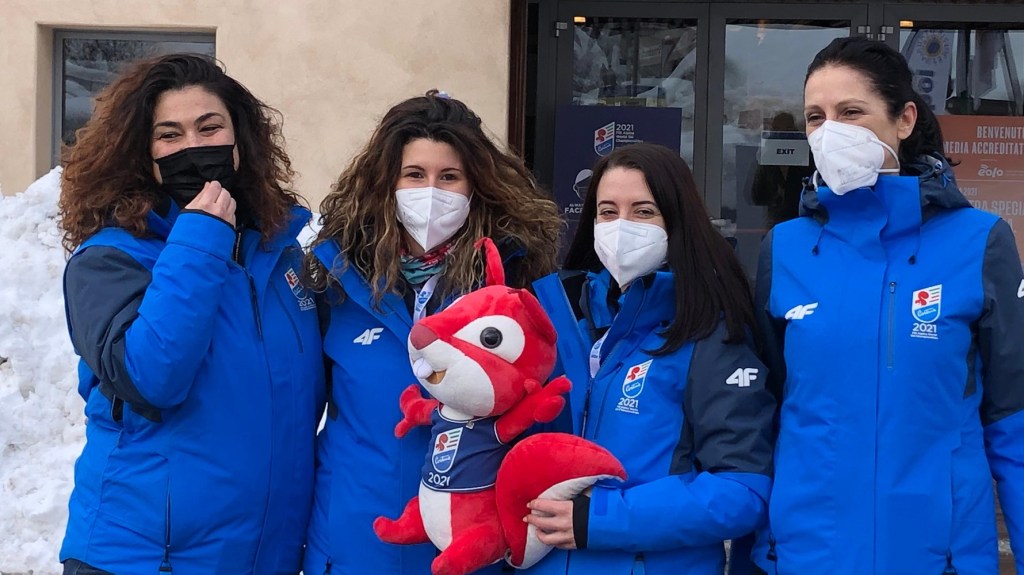
Off-piste planning – How to organize a world-class sporting event in a pandemic
Situated at the top of the Valle del Boite, the Northern Italian resort of Cortina is blessed with 360-degree views of the Dolomites. In February 2021, the alpine town played host to the FIS Alpine Ski Championships, one of the first competitive winter sports events to take place this year.
CWT Meetings & Events was appointed technical partner for the live sporting event and ensuring it passed off safely during a global pandemic. Fast-forward to February 2021 and the alpine town became host to the FIS Alpine Ski Championships, one of the first competitive winter sports events to take place this year.Working alongside the event’s organizing committee, the Cortina 2021 Foundation, CWT M&E managed and coordinated on-site accommodation for over 2,400 event attendees, comprising competing athletes and their teams, media professionals, and sponsor representatives, who traveled from over 70 countries.
A few tips then to ensure that no matter what roadblocks you may encounter behind the scenes, your attendees can live la dolce vita for the duration of the event.
- Build a team with specialized skills
A core group of ten CWT Meetings & Events staff with experience working on events including the World Figure Skating Championships and Giro d’Italia were brought on board to handle every stage of the event journey from preliminary stakeholder analysis through to carrying out a needs analysis with teams, sponsors and the media and developing technology to automate processes and support decision-making.
It’s critical to partner with a team who is experienced in managing sporting events. They should have first-hand knowledge of the needs of sporting federations, be able to anticipate dietary requirements for athletes, and be able to cost out last-minute changes to itineraries.
Learning to deliver a major event during a pandemic – a world-first no matter the industry or type of event – is no mean feat. When there’s no history and best practice to influence decision-making, rules change by the minute, and decisions get postponed, time compresses. What normally takes a month, you might have to pull off in a week. Putting together or hiring a strong team is the foundation for success in these extraordinary times. - Create strong local relationships
An approach based solely on revenue can leave event planners stranded when they need support. These are unprecedented times, and we’re all doing our best with the information we have. Teamwork and empathy are essential.
The night before the championships took place, one of our partner hotels flooded. Thanks to strong local relationships and helpful hoteliers, attendees were re-accommodated. - Be agile from the start
Any event planner knows that flexibility is key but a sporting event in a pandemic requires extreme adaptability, to know when to sit tight, when to renegotiate and when to think outside the box.
Not only can Covid-19 regulations change by the day, but you don’t how many athletes will need to stay or leave based on their team’s results. Additionally, teams are contractually allowed to pull out of an event two to three weeks prior. CWT Meetings & Events negotiated a deal with the local hotel association three years before the championships and had planned several fringe events which had to be canceled.
In the end, the agency pulled off a potentially high-risk sporting event in a small town with rigorous testing and Covid protocols. Engage your stakeholders in a Plan B for every scenario, and employ flexible tech at the start of the process and you won’t fail on the day. - Cultivate resilience
Resilience is critical. Work can last for many weeks and event planners on sporting events are required to deliver fast and at scale. Changes and unexpected situations are the norm, and sometimes you’ll have to start from scratch which can be demoralizing without a resilient and optimistic attitude. You’ll need to stay calm under fire, troubleshoot, and make trade-offs regularly. By cultivating resilience and looking after your own health and wellbeing, you can weather the storm and make great things happen. - Stay sustainable
Not only do eco-friendly events inspire change, they can also cut running costs, boost your reputation, and open up sponsorship opportunities. Numerous studies point to an increase in climate concern, post-pandemic.
In 2020, we were rated with the newly introduced Platinum medal by EcoVadis, an independent and internationally recognized rating agency that assesses corporate social responsibility and sustainable procurement. This rating placed CWT M&E among the top 1% of all companies evaluated worldwide, across all industries. The certification gave us the opportunity to work directly with Fondazione Cortina to certify the whole event. The fact that we pulled this off sustainably was truly the best feeling and creates a legacy for future sporting events.
A version of this piece was originally published in Conference and Meetings World.
- Build a team with specialized skills
-

The time is now – How to incorporate a virtual meetings strategy into your SMM program
There has long been a correlation between Strategic Meetings Management (SMM) and virtual meetings, but live meetings have taken precedence. Incorporating virtual meetings as part of the SMM strategy was typically reserved for those programs referred to as mature or optimized. But what was once considered virtual reality is now just reality. The Pandemic has forced organizations to restructure how they execute meetings. Organizations were left having to create near-term virtual meetings solutions with no real strategy. But is the near term enough? Should organizations prepare for long-term virtual solutions? The answer is yes, and the time is now.
SMM to drive your virtual meetings strategy
For those who are not familiar with SMM, it is defined as a disciplined approach to managing enterprise-wide meeting and event activities. It includes processes, suppliers, and data to achieve measurable business objectives that align with your strategic goals/vision. SMM delivers value in the form of quantitative savings, risk mitigation, better service quality, and can scale to meet the needs of your organization. SMM can help organizations achieve long term success by incorporating a virtual meetings strategy, but where do you start?
Stakeholder engagement: a collaborative opportunity for feedback
Before creating your strategy or trying to figure out what technology or supplier(s) to use, start with stakeholder engagement. Steve Jobs once said, “You’ve got to start with the customer experience and work backward to the technology.” Who better to help you understand the needs than those tasked with organizing the event? Create a stakeholder map to include those who will use the services and those subject matter experts/departments who may have an interdependency on the service such as procurement or privacy. This engagement creates a collaborative opportunity to share and gather feedback, suggestions, requirements, wants, needs, and pain points. Everyone contributes to the process and, ultimately, to the journey. By gaining stakeholder buy-in, you will have greater visibility and adoption that eases change fatigue.
Mitigate the risks with governance
Now that you have gathered intelligence from the various stakeholder groups and before you develop your strategy, consider the governance needed to execute and support your plan. Incorporating your virtual meetings should have the same level of consistency, standards, and procedures as your live meetings. This is especially important, considering sensitive data is being transmitted electronically. This changes the type of security needed to execute. Having clear guidance, policy, and procedures on managing data under the General Data Protection Regulation (GDPR) and the California Consumer Privacy Act (CCPA) is a critical success factor and mitigates risk for the organization.
Technology + Data = ROI
Lastly, technology and data tie it all together. Establishing the infrastructure for data capture that incorporates benchmarking and best practices will not only measure the success of going virtual but also validate the positive impact of this change. During a crisis or during times where it is business as usual, data can be a powerful demand management tool to drive business decisions at the highest levels within your organization, resulting in greater ROI.
While this new normal dictates the pace at which the meetings industry has to evolve, it creates an opportunity for ongoing process improvement and improved strategy design that will prepare organizations for the future. Integrating virtual meetings as part of your SMM strategy is a natural next step. SMM is scalable and adaptable to meet our ever-changing landscape. Whether it is a pandemic, economic downturn, or business, as usual, SMM sets your organization up for success.
Our SMM Center of Excellence is already helping industry leaders incorporate virtual meetings into their long-term plans. Contact us to see what we can do for you!
Image credits: Adobe Stock
-

Fast change in a slow environment: 4 things you can do now to accelerate toward ‘net zero’
I love my car even though it mostly sits in the garage these days. I’ve had it virtually since I was a teenager and we’re nearly the same age. I’d argue it’s almost a classic though few of my friends or family would agree. It generally still works brilliantly but for a few limitations – one of which is the somewhat ‘playful’ fuel gauge. I’ll never forget the time when, on the motorway, I felt a funny sort of vibration and realised to my horror that I was nearly out of petrol. But I had faith in the car, and it was that last stretch of road before home, the one we all know really well. I took stock, focused, drove as smoothly as possible, and – I kid you not – rolled onto the forecourt coming to an almost perfect, joyous, stop. Right next to the pumps.
In many ways this is a great analogy for almost any organisation trying to green its travel programme. We may feel we have long-standing limitations and the journey may seem difficult. But by understanding the starting point and taking care en-route, it’s possible for any organisation to accelerate toward net zero.
Let’s take a look at how that journey can be broken down:
- Your fuel tank – great data and carbon targets. My experience shows that before setting off, you need to plan your end goal and check progress regularly. Your organisation can do the same by understanding its current emissions data and setting carbon reduction targets for future dates such as 2030 and 2050. Annual carbon budgets should be used to track progress towards these targets with maximum accuracy.
- Your engine – information at Point of Sale. Motors (preferably electric ones!) get us to where we need to be. But they also generate the emissions so need to be made as efficient as possible. By utilising ‘point of sale’ information – that CWT recently announced had been added to its myCWT travel management platform, travellers can be ‘nudged’ towards picking the most efficient flights or greenest hotels. Small effortless changes made thousands of times over can have a drastic impact on an organisation’s overall emissions. Travellers have become used to making decisions based on price and other data. Adding carbon information is a natural progression of this.
- Your steering wheel – green travel policies. Just like a steering wheel, well-formed green travel policies can direct you to your end goal. A simulation of a typical SME travel programme run by Thrust Carbon found that the 14% of flights taken in Premium Economy, Business and First generated a whopping 47% of air travel emissions. This illustrates how light-touch policies – such as slightly reducing business class flights – can have a large impact on emissions. Similarly, businesses could choose to mandate electric vehicles, which in the UK emit just 29gCO2/km, compared to over 100gCO2/km for most traditional cars.
- Your passengers – taking travellers with you. Your travellers need to be committed to your organisation’s net zero goals. But the good news is that not only will a shared mission drive your journey to net zero, but it’ll help your organisation appear attractive to like-minded clients and employees, who by and large will want to engage with the challenge. It’s a great opportunity for the travel management community to broaden its focus and expertise beyond traditional priorities such as cost control too!
So there you have it. Net zero might seem daunting, but it’s a journey that can be broken down into manageable portions, which together are greater than the sum of their parts… just like my ‘classic’ car!
About the author
Tan Strehler-Weston is head of policy and operations at Thrust Carbon. Prior to this he spent seven years working for the UK Government on net zero and international relations policy.

- Your fuel tank – great data and carbon targets. My experience shows that before setting off, you need to plan your end goal and check progress regularly. Your organisation can do the same by understanding its current emissions data and setting carbon reduction targets for future dates such as 2030 and 2050. Annual carbon budgets should be used to track progress towards these targets with maximum accuracy.
-
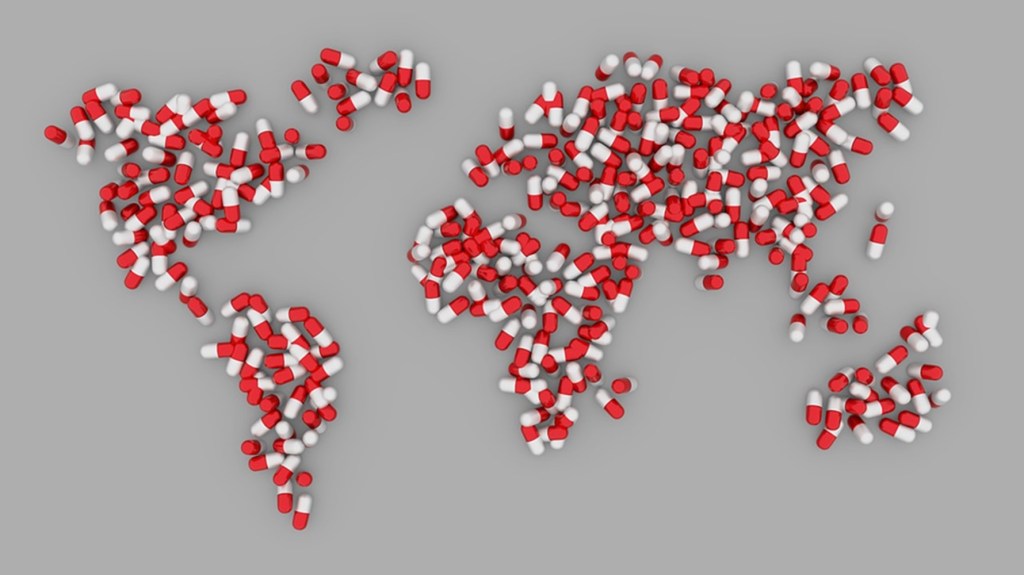
People. Planet. Perspective.
According to the World Health Organization (WHO), avoidable environmental causes result in over 13 million deaths each year.
The key word here being avoidable.
No one in their right mind deliberately sets out to create an environment where clean air, water and food are not readily available; or a world in which economies are not focused on health and well-being; or where cities are uninhabitable, and people have no control over their health, or that of our planet. Sadly, as the bumper sticker immortalised in Forest Gump proclaims (when you watch the edited version on a plane) “..it happens!”
But, if the COVID pandemic has taught us anything at all, it is science’s healing power. Not only that, but it delivers the bedrock on which improvements in global health are built, by fuelling innovation, triggering “Eureka!” moments, informing policy-making, reducing hurdles and ultimately advancing better, healthier lives for all people. Science is, after all, knowledge.
So this United Nations World Health Day, instead of being overwhelmed by the magnitude of the problems facing us, let’s think about our planet and our health. And let’s join WHO in urging governments and the public to share stories of steps they are taking to protect the planet and their health, and prioritize well-being societies.
Because, as the French chemist and microbiologist, Louis Pasteur famously said: “… knowledge belongs to humanity, and is the torch which illuminates the world.”
-
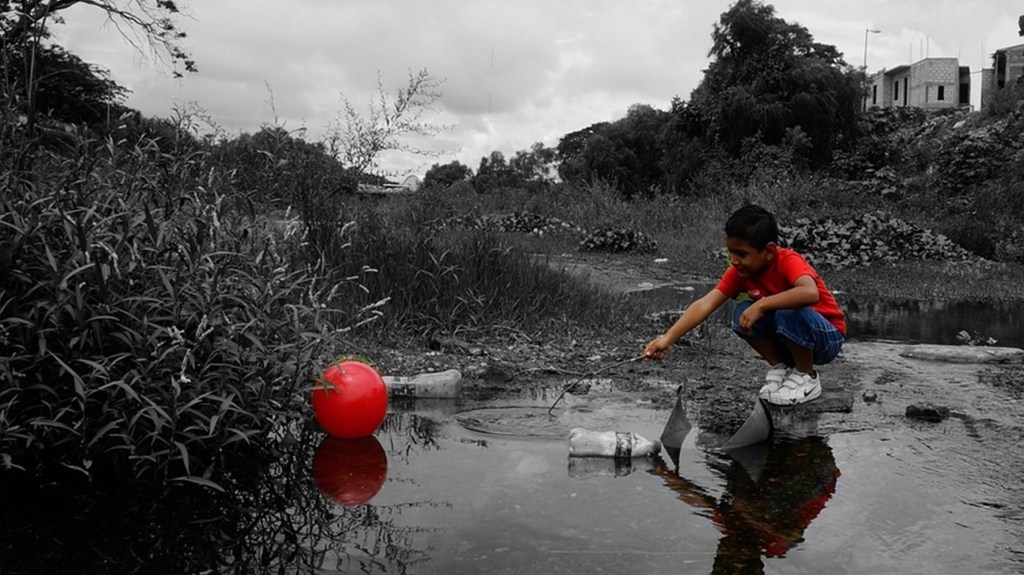
Acknowledging the United Nations International Day of Conscience
Article 1 of the Universal Declaration of Human Rights states that “all human beings are born free and equal in dignity and rights and are endowed with reason and conscience and should act towards one another in a spirit of brotherhood.”
So, set as it is against a backdrop of unbearable oppression, conflict, and strife, the fourth United Nations International Day of Conscience provides us with another chance for reflection on our moral sense of right and wrong – and an opportunity to look to a better future; one in which everyone has the right to be born free and equal in dignity and rights.
However, who can lead and genuinely encourage the job of building a culture of conscience when it requires comprehensive civic, cultural, educational, and social action.
If we still believe that this is our goal – i.e. a place where each of us has something to learn, give, and share – then it is up to each of us to support that aim. Today is a chance for reflection and soul searching. Am I listening to my conscience? Am I doing what is morally right? Am I standing up and being counted?
And, depending on our answers, I always find it comforting to remember the words of the late The Most Reverend Desmond Tutu: “If you are neutral in situations of injustice, you have chosen the side of the oppressor.“
-
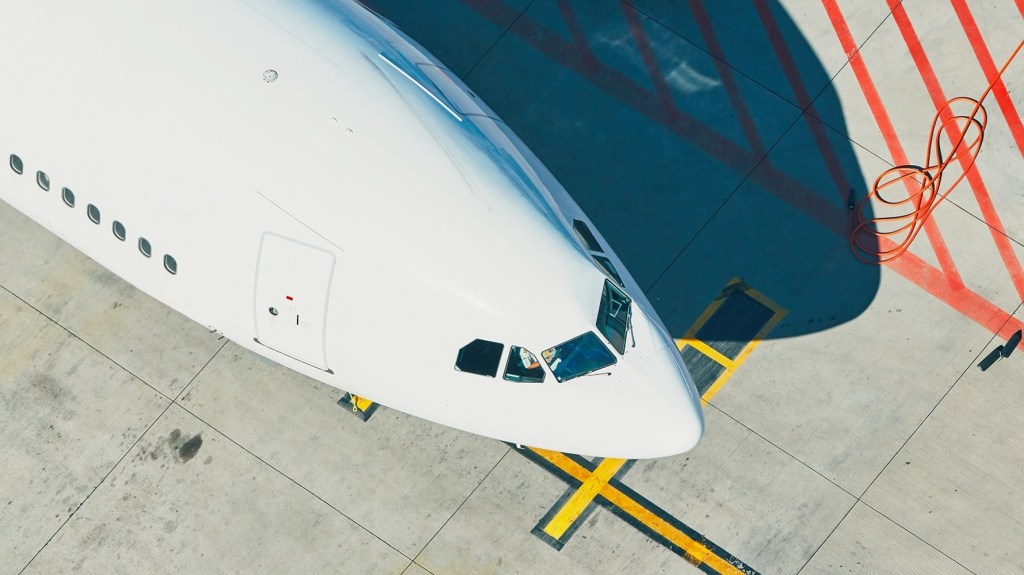
Fuel for thought: Should business travelers be concerned about rising airfares?
Few stories have dominated headlines more than the rise in global energy prices in recent times, apart from maybe the incident at the Oscars. For the world’s airlines, rising fuel costs are a particularly unwelcome development, coming just as many were starting to see demand recover.
According to IATA’s jet Fuel price monitor the price of jet fuel on 18 March was up 31% over the previous month, and up nearly 108% year-on-year. The recent increase in oil prices has been significant but in fact volatility in prices isn’t at all unusual in this market.
Many airlines have hedging strategies with a view to limiting the impact of the volatility.
In terms of their pricing, airlines have traditionally found it quite difficult to pass on additional fuel costs to customers because price increases tend to reduce demand and balancing capacity, pricing and demand in highly competitive markets is very challenging.
In the current environment, the challenges facing airlines vary quite considerably. In general, though, capacity in most markets is still reduced from 2019 levels, and many airlines retired their oldest, least fuel-efficient aircraft during the pandemic. In addition, demand is recovering strongly as covid-related travel restrictions have eased.
As a result, we have seen some airlines increase fuel surcharges and some have increased fares 5 – 10%. Many US airline executives have expressed confidence that they will be able to increase fares. For example, speaking at a JP Morgan conference in mid-March, Glen Hauenstein, President at Delta Air Lines, commented “I think a lot of industry observers have questioned whether or not the industry will be able to pass on the higher cost of fuel to the end consumer. We at Delta, given our demographics and our average clients, feel that that is something that we can easily achieve… we need to recapture somewhere between $15 and $20 each way on a ticket, on an average ticket value of about $200, so somewhere under 10%.”
Booking ahead
There are factors that play into a rise in airfares that are not entirely due to jet fuel prices. Seasonal fluctuations and a surge in demand post-pandemic play a role.
Nevertheless, many customers will now be reviewing how they can avoid slightly higher fares.
Booking further in advance to lock in a low price is always a good strategy. For business travelers, who tend to book closer to travel, this isn’t always so straightforward, so corporate travel buyers will be considering other options to reduce exposure to higher prices.
Sustainable aviation fuel: Ready for take-off?
In some ways the current increase in jet fuel prices is providing a foretaste of an issue that more airline customers will have to consider.
Sustainability is a key consideration for many corporations and the airline industry is increasingly looking to the use of Sustainable Aviation Fuel (SAF) as an important tool to reduce the CO2 emissions associated with air travel. For now at least, the cost of SAF is much more expensive than traditional jet fuel. In part this is due to the higher costs of production, which is still at relatively small scale. IATA estimated in late 2020 that the cost of production for SAF was two to four times higher than normal aviation fuel. Earlier this year Air France-KLM announced a surcharge to cover the expense of increasing its usage of SAF on its flights departing from France and the Netherlands, in response to government regulation.
While all of us hope that the situation in Ukraine improves quickly and also leads to a decrease in oil prices, the question of how companies and individuals should adapt their travel purchasing in response to higher fuel costs is going to be a consideration for some time to come. For many, the knowledge that fluctuations are nothing new, and several factors play into the current increase is a comfort, as is the knowledge that it is worth paying a little extra for more sustainable air travel and thoughtful, fruitful business trips.
Image credits: Adobe Stock
-

The bounce back: Evolving travel management for a new era
We are seeing the highest levels of business travel since the pandemic began. CWT booking volumes show a significant increase in travel to and from several countries that have recently relaxed testing and quarantine requirements for international travel.
This comes as no surprise. A legacy of the Covid-era is a visceral knowledge that the benefits of experiences and connecting in-person run deep. Travel technology company Amadeus surveyed 9,000 travelers in nine markets around their sentiment towards travel. Over 70% surveyed said they were eager to travel within the next 12 months.
The current state of business travel is the subject of a new podcast episode by Amadeus, ‘The Big Rethink – Discussing the future of business travel’ featuring Nick Vournakis, EVP and Chief Customer Officer, CWT and Paul de Villiers, SVP, Global Business Travel Accounts, Amadeus.
The resurgence of travel begs the question of how travel management companies will evolve to serve the business traveler of the future.
A shift to managed travel
“Business travel agencies and corporations have used the last 18 – 24 months to expand on their digital transformation journeys,” says Paul de Villiers, “Once they primarily provided travel, issued tickets, and made changes etc. Now it’s all about having the latest and the most accurate information at their fingertips to keep clients’ employees safe and well. More than 92% of respondents to our survey stated that safety was the number one priority. Before, few mid-to-small sized companies relied on structured programs or professional travel management services. Now because of the complexity and the need to ensure the safety for their employees, there’s an increased demand for managing travel disruption, whether that’s last-minute changes, canceling a trip just before departure, or even what to do when airlines cancel or reschedule flights at short notice.”
“People need to know that they will be supported in real-time. It’s critical when you’re stuck in an airport and your trip has been messed up that you can speak to somebody. There’s nothing worse than being totally stressed out at the airport, calling a service number, and then you get eight options of choices of things to do. And none of them are relevant to your situation.”
People plus technology
“We have learned that the nature of taking calls is different,” says Nick Vournakis, “our calls are longer than they have been historically. Travel agents and travel counsellors are engaging in a way that they necessarily haven’t needed to before around creating a level of comfort and assurance. So by and large, the nature of how calls are handled and the time it takes to get from issue to resolution is changing. That reinforces the importance of having a people-based model. The other big change for TMCs is being able to accommodate a new decision-making model and potentially a new operating model that is congruent with the way people want to work and behave.
If the nature of how people are working is changing, the TMC model has to learn and adapt and get comfortable with an always-on model from a business travel perspective; a model that has multichannel or omnichannel capability where you can support through a mobile device or an actual human on the line.
Our ecosystem is not going to be fully people driven, or fully technology oriented. It’s the blend of people plus technology that will be the winning solution going forward.
A traveller might engage with a counsellor through a purely digital platform like text and chat. And that should look and feel no different than the voice channel. But that technology is important because we need to understand as much about the context of that traveler before the engagement even starts.”
Moving forward together
“Having a view of the horizon and just beyond means having an understanding of the problems that we’re not going to solve on our own,” says Nick, “We have to fundamentally get comfortable with the idea that not every provider needs to do 100% of the work. We’re keen on ensuring that we can operate an open ecosystem, where we have an expertise and understanding of what it means to use API’s to drive the right level of connectivity.
Truly understanding what it means to be relevant in the future, we have to keep our eyes on the horizon with regard to the issues we need to solve for. How does that fundamentally change the way we operate within the ecosystem, who we partner with, and how we behave? Any organization that says, ‘we’re going to build all of this in-house’ is crazy. We work with partners with whom we can co-create, collaborate and ensure that we’re bringing solutions to move our whole ecosystem forward.”
Listen to the complete episode of‘The Big Rethink – Discussing the future of business travel’
Image credits: Adobe Stock
-

CWT launches real-time carbon footprint indicators to help customers make more sustainable choices
CWT, the Business-to-Business-for-Employees (B2B4E) travel management platform, recently recognized for the 5th year in a row as a leader in sustainability, today launches new point-of-sale carbon footprint indicators for myCWT mobile and web. Delivered as part of CWT’s $100 million investment in the myCWT travel management platform, this further enhancement of its existing sustainable proposition will be available at no additional cost to all CWT customers globally. The new enhancement will provide travelers with insights into the potential environmental impact of a trip, enabling them to make more sustainable choices at the point of booking.
“We surveyed our global customer base at the end of 2021, and an overwhelming 87% expressed that they would like information provided to their employees at point-of-booking to help reinforce responsible travel choices,” said Erik Magnuson, VP Product Management, Travel Content & Connectivity. “CWT’s new carbon footprint indicators will help customers and their travelers understand their corporate and personal travel footprints, and reduce their impact on the environment,” Magnuson concluded.
CWT’s comprehensive carbon footprint indicators will provide CO2 emission calculations with cutting-edge accuracy and clarity, empowering travelers to make smart decisions and reduce their environmental impacts with minimal effort.
This latest service in CWT’s suite of sustainable travel products is supported by award-winning carbon intelligence platform, Thrust Carbon. As the first major global TMC to activate point-of-sale emissions data with Thrust Carbon, CWT will use their carbon data analytics to answer the industry’s call to action to both report emissions and reduce our impact on our planet.
“If the traveler cannot see their emissions at point-of-sale, then it simply will not be a factor in their decision making” said Mark Corbett, Founder & Director of Thrust Carbon. “We are rapidly moving to a world where emissions data will be valued side by side with financial data. Together with our partners at CWT, we have made a giant leap towards delivering this for business travelers around the world.”
TMCs are pivotal partners in helping companies incorporate sustainability goals into their travel programs, identify responsible travel choices and fully incorporate sustainable travel into the overall performance of their program. CWT has a number of initiatives underway to further evolve and improve its existing sustainability portfolio, including new dashboards and reporting as well as expanded capabilities in myCWT web and mobile.
CWT is a leading global partner in business travel, meetings, and events. Operating across six continents, we deliver sustainable, tailored solutions that help organizations connect, engage, and thrive in an evolving world. Our myCWT platform integrates advanced technology with human expertise to simplify travel and enhance traveler and attendee experiences. Extensive global coverage, seamless data integration, AI-driven analytics, and carbon-conscious travel tools enable businesses to optimize their travel and meetings programs while delivering measurable value.
With 150 years of industry experience and a deep commitment to partnership, CWT collaborates with clients to shape the future of business travel and events, making them more efficient, responsible, and impactful.
Thrust Carbonhas a vision of a world where our actions don’t have to cost the earth. As the leading carbon intelligence platform in travel, they report, reduce, and remove emissions. Their IATA & BTN award-winning products are easy to integrate, deliver market leading accuracy, and total transparency. For Thrust Carbon press enquiries, please contact ed.hopkins@darkgreenpr.com / +44 7940 968 704
-

“Howdy, partner!”: A glimpse into the operations of CWT’s Global Partners Network with Richard Saunders
CWT works with nearly 100 partner agencies around the world to support its customers in markets where it doesn’t have owned operations. We chat to Richard Saunders, the newly appointed Vice President of CWT’s Global Partners Network (GPN), about how CWT has maintained strong relationships with its partners through the pandemic, what it takes to achieve a best-in-class and uniform customer experience across the network, and his top priorities as travel recovers.
How has CWT supported and engaged with its partners while travel volumes have been suppressed?
When the pandemic hit in March 2020 we established a new way of communicating and getting updates from our 100 partners.
We surveyed them every week to understand whether there was a change in the way our partners were operating and whether we had to activate business continuity plans.
The GPN commercial team had over 600 conversations from March 2020 through to last year. We talked to each partner on a regular basis, having weekly calls with our largest partners and talking to our smaller countries on a monthly/bimonthly basis. This was just to check in, see how the situation was in their country, and how they were managing.
In many countries, there was no government assistance or financial support for businesses. It was critical to stay connected and active to understand how our partners were surviving through the hardest of times. It was also the first time that many had worked from home, and so we supported our partners in sharing best practise for homeworking.
We’re very fortunate to have a resilient and financially strong network of partners, and I’m proud to say that none of our partners went out of business due to the pandemic.
Can you share any stories of partners that went above and beyond to support customers and their travelers during the pandemic?
In some ways, the last couple of years have brought out the best in people. When the restrictions hit and airlines stopped flying, several partners, chartered aircraft to support our customers in repatriating staff who became stranded. One great example is a charter put together by our colleagues in Africa to take back stranded Indian nationals. They coordinated with several of our other African countries to ensure that we could support any other customers who had travellers in a similar situation.
Another partner who works with us in multiple countries in pivoted from corporate travel to air cargo, bringing in vaccines from different parts of the world.
There was a lot of collaboration between partners who stepped in to help each other out. It’s important that we nurture and instil cross-regional opportunities. At the height of the pandemic someone from my team set up a WhatsApp group for our partners to support each other and share ideas and issues, but also to help keep each other feeling motivated.
How does CWT ensure a consistent and reliable experience across its vast network of partners?
The foundation of our partnership is based on a strong and robust contract that requires significant governance by the team. We work with the leading agencies in market, who are focused on corporate travel and who work in a compliant and transparent manner.
Our customers ask for a variety of different requirements, whether it’s around data protection, data privacy, security, and service levels.
All of this forms part of our overall agreement and we constantly update it to ensure that it remains relevant. A significant portion of the teams time, when it’s ‘business as usual’ is conducting in person business reviews with our partners. It’s very much around making sure our partners maintain the required KPIs, can deliver ‘that consistent experience’ and it also gives us the opportunity to review financial performance. Having robust business continuity plans in place also allows us to ensure that should the unexpected happen, we can manage it and support our customers when they need us most. We have an efficient network and it’s very clear what our requirements are. With ongoing training, this ensures that our partners are fully aware of what we need them to be delivering to our customers.
What areas has CWT been investing in to further strengthen its partner network?
We’ve invested heavily over the last few years on ensuring that our core product is available globally
Part of that investment was redefining data transmission. We now have real-time data available for our customers across the globe.
That was a significant milestone because data drives everything. Customers don’t care whether it’s a partner or wholly-owned. They want to have access to the same suite of products and CWT delivers that everywhere.
With travel picking up again, what are the top priorities for the GPN in 2022?
The next step is going to be around continuing that journey of deploying more products and services. We are part of the journey of the enhancements to myCWT and this will be expanded across many markets in the GPN over the coming months. This includes offering even more content from our Hotel solution, Roomit which we know customers will be delighted about. We have also enabled more of our network to support our follow-the-sun strategy.
Our ‘follow the sun’ capability allows us to flow work through our network of global service locations as needed, eliminating the historic industry dilemma of out-of-hours servicing. It also allows us to better manage issues, like weather incidents, by using the strength of our global network. It’s a means for delivering the best content, and providing a fully global, consistent service offering, to meet current and emerging customer requirements.
Pre-pandemic, you traveled extensively to visit CWT’s partners around the world. Where would be your top destination to tack on a few leisure days to a business trip?
I love Istanbul from a city perspective. If I’m lucky enough to escape the British winter, it’s to somewhere in the Middle East with guaranteed sun like Muscat or Dubai.
Image credits: CWT
-
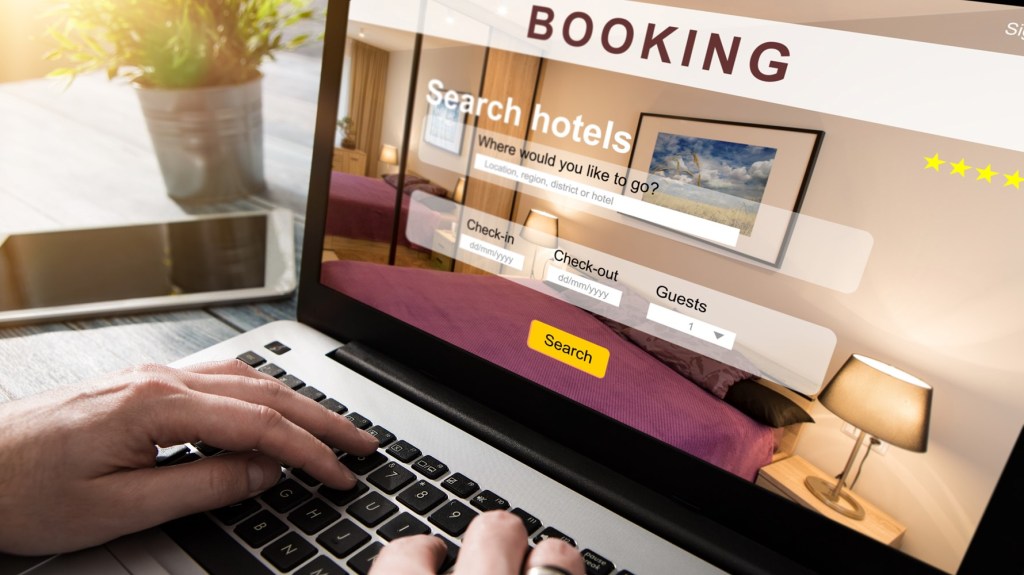
Rate of change: What’s impacting pricing in hospitality right now?
We’ve seen more fluctuation in hotel room rates than ever in a short space of time. After rising 3.5% in 2019, hotel prices fell 8.3% in 2020 and an additional 17.7% in 2021. The GBTA CWT Global Travel Forecast 2022 published late last year predicted a 13% rise in hotel prices globally in 2022, followed by a further 10% in 2023. Where testing and quarantine requirements have relaxed, bookings are booming. And as business travel gains momentum, higher occupancy and hotel room rates will follow.
Russia’s invasion of Ukraine has since sent shockwaves across the globe. Travel and hospitality brands, despite recovering from the impact of the pandemic, responded with trademark resilience and care, offering worldwide support and accommodation to victims of the invasion.
But the impact will be felt by a hospitality industry still in recovery. Further stress will be placed on global supply chains, raw materials, real estate, taxes and inflation will impact construction costs, labour, and services.
In a bid to return rates closer to pre-pandemic levels for business travelers, hoteliers will have to balance guest experience and amenities with a new reality of health, safety and cost.
Competition is heating up
Hoteliers will be under pressure to cater to business travelers. Competition is strong from serviced-apartment providers and sharing-economy players like Airbnb and Vrbo, and increases to average daily rates (ADRs) across markets will vary dramatically depending on local COVID restrictions.
As for dealing with the fluctuation of average daily rates (ADRs) in the market place, travel managers should consult on the proper approach to find the right balance of content from key suppliers with third-party (aggregator) content when appropriate to drive savings for their programs.
Data makes the difference
While hoteliers continue to build new properties and lifestyle brands to cater to a pent-up demand for leisure travel, there will be an effort to return ADRs to pre-pandemic levels for business travelers.
Market dynamics are highly variable and differ by market and scale (i.e., economy, midscale, and luxury). Consulting with experts on a data-driven approach to sourcing will be invaluable to travel managers and procurement professionals looking to optimize their programs in these strange times.
Image credits: Adobe Stock
-

Michelle McKinney Frymire appointed to the United States Travel and Tourism Advisory Board
CWT, the business-to-business-for-employees (B2B4E) travel management platform, announces that its Chief Executive Officer, Michelle McKinney Frymire, has been appointed to the United States Travel and Tourism Advisory Board by U.S. Secretary of Commerce Gina Raimondo. In her role, she will provide the Secretary with advice and counsel on issues and concerns that affect the U.S. travel and tourism industry.
Commenting on her new role, Michelle McKinney Frymire said: “I am honored to have been appointed to such an important position, and look forward to serving alongside the other board members on behalf of our industry and our country as the travel and tourism industry continues its recovery.”
CWT is a leading global partner in business travel, meetings, and events. Operating across six continents, we deliver sustainable, tailored solutions that help organizations connect, engage, and thrive in an evolving world. Our myCWT platform integrates advanced technology with human expertise to simplify travel and enhance traveler and attendee experiences. Extensive global coverage, seamless data integration, AI-driven analytics, and carbon-conscious travel tools enable businesses to optimize their travel and meetings programs while delivering measurable value.
With 150 years of industry experience and a deep commitment to partnership, CWT collaborates with clients to shape the future of business travel and events, making them more efficient, responsible, and impactful.
The United States Travel and Tourism Advisory Board serves as the advisory body to the Secretary of Commerce on matters relating to the travel and tourism industry in the United States. The Board advises the Secretary on government policies and programs that affect the U.S. travel and tourism industry, offers counsel on current and emerging issues, and provides a forum for discussing and proposing solutions to industry-related problems.